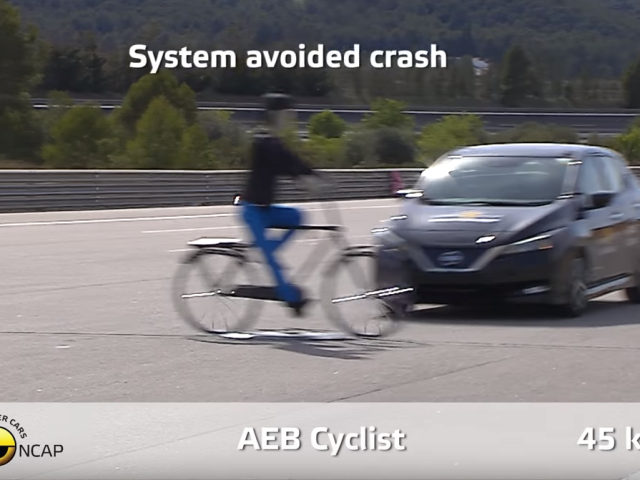The Social and Economic Consequences of Road Traffic Injury in Europe
This report summarises current knowledge regarding the following socio-economic aspects of traffic injury in Europe:
- The completeness and accuracy of official road accident statistics
- Long-term impacts of traffic injury
- Social disparities in road accident risk
1. The completeness and accuracy of official road accident statistics
Official road accident statistics are incomplete and inaccurate in all countries. The level of reporting for injuries treated in hospitals is, on the average, less than 50%. Injuries are not always correctly classified by severity in police accident reports. The report makes the following recommendations for research and policy making to improve the quality of official road accident statistics.
Recommendations for research
The following recommendations are made for research designed to estimate the true incidence
and societal cost of traffic injury:
- Studies designed to assess the level of reporting in official road accident statistics should be performed regularly.
- Studies should address factors that influence the likelihood that an injury will be reported in official accident statistics and try to assess the amenability of these factors to interventions designed to improve the actual level of reporting.
- Studies should be made to determine the extent to which injuries recorded by medical institutions can be geographically located correctly.
- Studies should be made to determine the possibility of electronically merging police records and hospital records of traffic injury in ways that will not violate protection of privacy and personal integrity.
- Guidelines based on research should be developed regarding the essential elements of a common approach to the estimation of the costs to society of traffic injury.
Recommendations for policy making
The following recommendations are made regarding policy making and the administration of injury recording systems:
- A simple injury scale should be developed for use by the police and other emergency services. Final classification of injuries according to severity should be performed by medical professionals.
- Countries should provide training in the use of the AIS in order to make the use of this scale more common and thus make injury data more comparable between countries.
- Countries should encourage electronic linkages between sources of injury data, like STRADA in Sweden or the CODES system of the United States.
- Countries should regularly monitor the level and accuracy of reporting in official road accident statistics and make the results of studies available to other countries.
- Countries should regularly provide a set of economic valuations of the benefits to society of preventing road accident deaths and injuries for use in cost-benefit analyses of road safety programmes.
2. Long-term impacts of traffic injury
Long-term impacts of traffic injury are poorly documented in all countries. Little is known about these impacts. There are, however, reasons to believe that an increasing number of people live with lasting impairments as a result of traffic injury. The following recommendations are made for research and policy making.
Recommendations for research
The following recommendations are proposed for research:
- Studies should be made to assess the applicability of various quality-of-life scales for the purpose of describing systematically the long-term impacts of traffic injury.
- Surveys of the general population should be made at regular intervals to determine the incidence and prevalence of lasting impairments as a result of traffic injury.
- Studies should be made to assess the incidence of mild traumatic brain injury as well as its long-term socio-economic consequences.
Recommendations for policy making
The following recommendations are made for policy making:
- Countries are recommended to adopt a consensus-based prospective injury impairment scale based on the Abbreviated Injury Scale (AIS).
- The number of people living with lasting impairments as a result of traffic injury is likely to be increasing. The EU and member states should therefore consider adopting targets for reducing not just deaths, but also serious injuries.
- The EU should encourage member states to adopt a common definition of slight and serious injuries and of lasting impairments. Implementing common definitions of these concepts would make road accident statistics more comparable across countries than they are today.
- Programmes designed to treat accident victims who suffer long-term impacts of injury, like post traumatic stress disorder, should be further developed and their effects evaluated.
3. Social disparities in road accident risk
Social disparities in road accident risk are also not very well known. However, most studies show that individuals who have a low social status are more frequently involved in road accidents than individuals who have a high social status. This tendency applies to all groups of road users. The following recommendations are put forward with respect to social disparities in road accident risk.
Recommendations for research
The following recommendations are made for research:
- Countries that have not studied the association between social status and road accident risk are encouraged to do so.
- Studies should be made to determine which variables are the strongest predictors of social disparities in road accident risk: education, income, quality and characteristics of residential area, or any combination of these variables.
- Studies should be made to identify factors that may explain why road accident risk is associated with social status, in particular if differences in road user behaviour mediate this relationship.
- Studies should be made to determine if social disparities in road accident risk vary according to injury severity or group of road user.
Recommendations for policy making
The following recommendations are made for policy making:
- Countries are encouraged to develop policies designed to reduce social disparities in road accident risk, to the extent that these are regarded as unjust.
- A systematic use of traffic calming in residential areas for the purpose of reducing social disparities in road accident risk is encouraged.
- Policies aimed at modifying unsafe road user behaviour associated with low social status should be developed.







